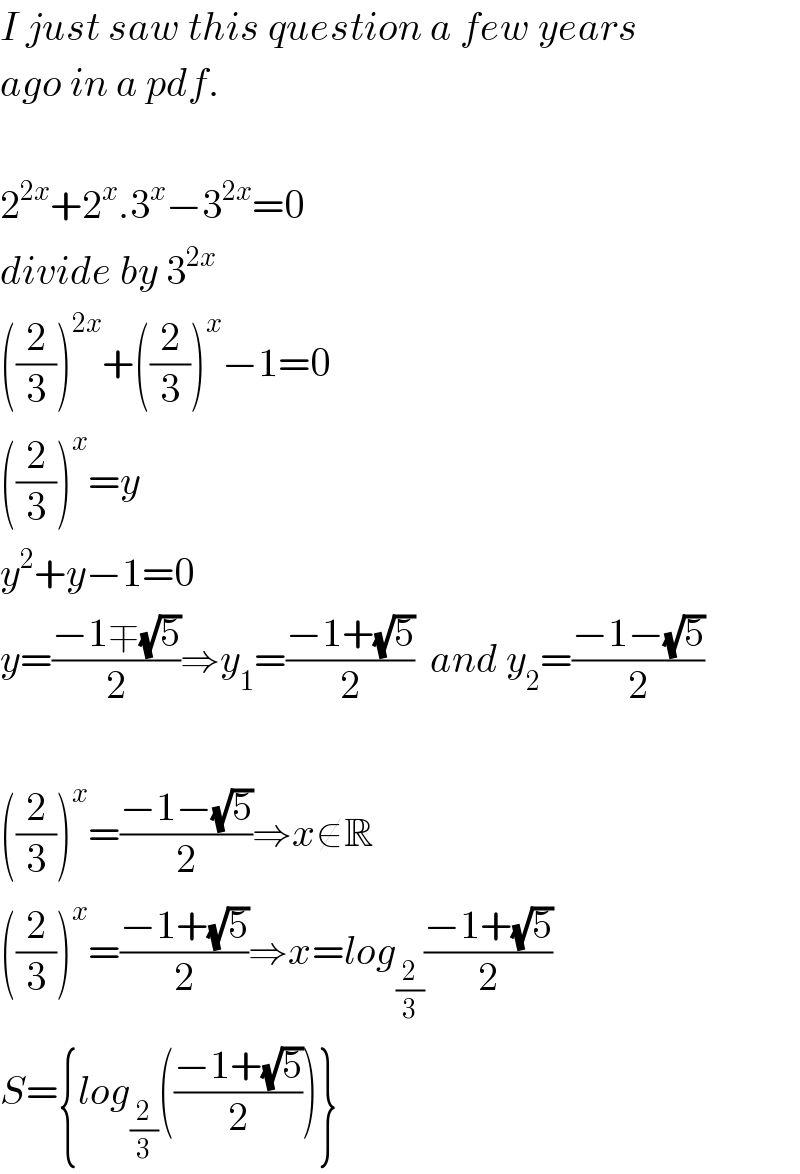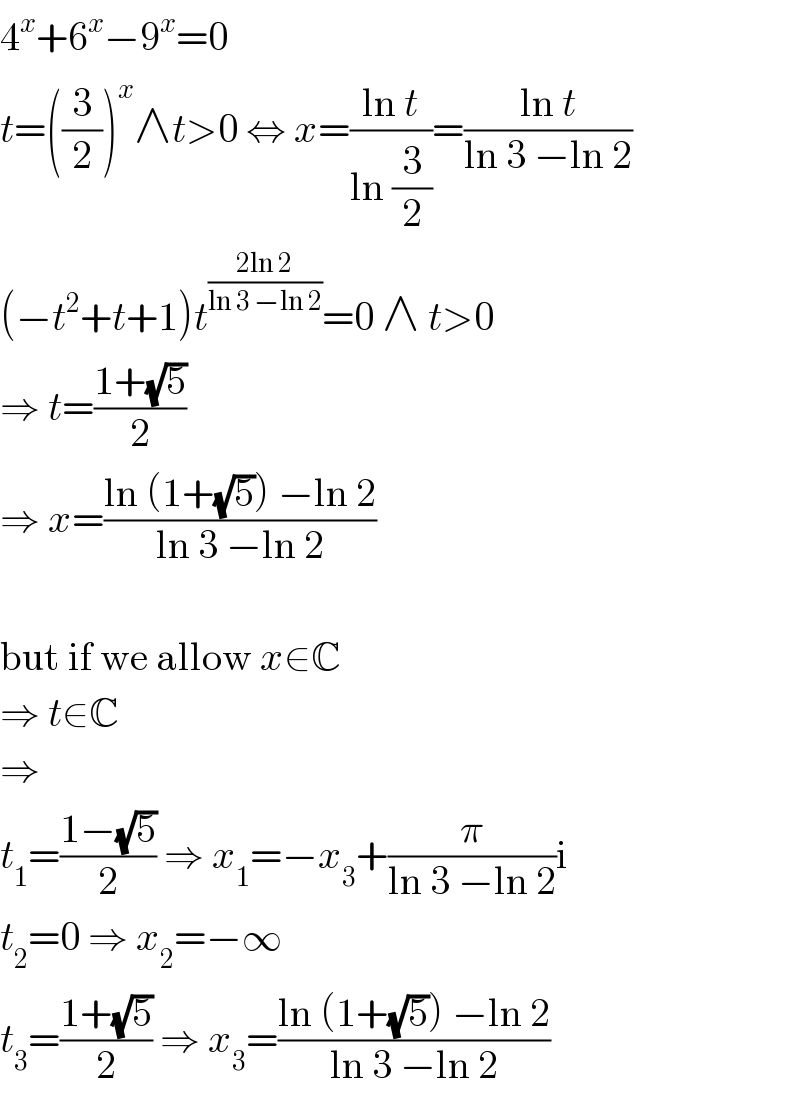
Question and Answers Forum
Question Number 74168 by mr W last updated on 19/Nov/19

Commented by mr W last updated on 19/Nov/19

Answered by Rio Michael last updated on 19/Nov/19
![dividing by 4^x , 1 + ((6/4))^x = ((9/4))^x 1 + ((3/2))^x = ((3/2))^(2x) let ((3/2))^x = a ⇒ 1 + a = a^2 a^2 −a−1=0 a = ((1±(√5))/2) or ((3/2))^x = ((1±(√5))/2) x (log(3/2)) = log[((1±(√5))/2)] x = ((log[((1 ±(√5))/2)])/(log(3/2))) x ≈ 1.2](Q74182.png)
Answered by Maclaurin Stickker last updated on 19/Nov/19

Commented by Maclaurin Stickker last updated on 19/Nov/19

Commented by malwaan last updated on 20/Nov/19

Answered by MJS last updated on 20/Nov/19

